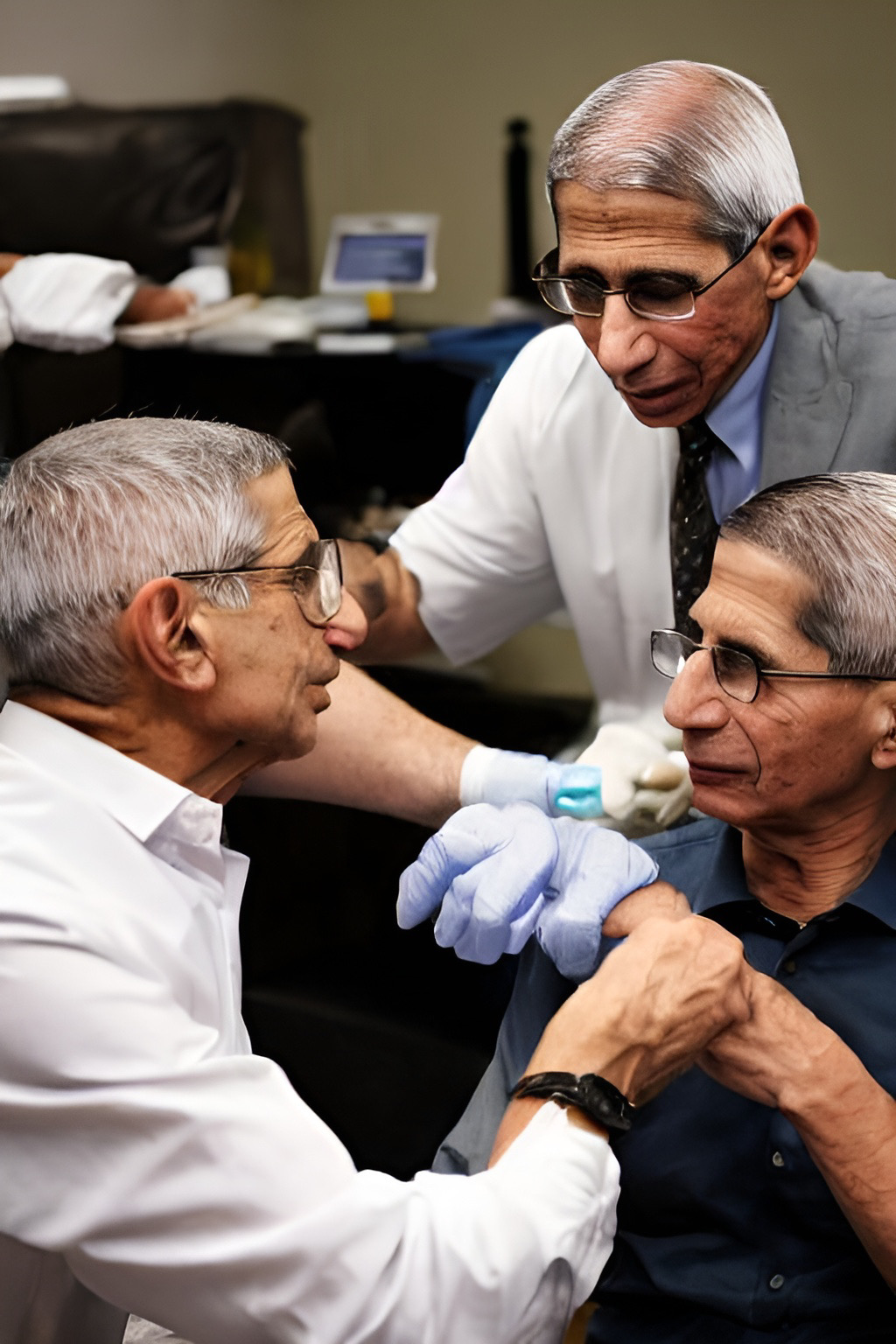First, Do Some Harm

Our medicalized society continues to drink its own poison.
Redpills come in a wide variety of grades and dosages. As far as health and nutrition is concerned, a classic “gateway” redpill is hospital food. If you’ve ever had the misfortune to be laid up in the hospital, or to visit a friend or loved one there, you probably won’t need to be told how terrible the food is. I remember vividly, back when I was perhaps a little less health-conscious than I am now, visiting my grandfather after he had a stroke. A nurse appeared and dumped a scuffed plastic tray on my grandfather’s lap. This, apparently, was lunch. Item one: a plate of three different kinds of watery mush, which pooled separately and refused to mix, as if somehow they were chemically incompatible with one another. Item two: a small cup of the thinnest squash I’d ever seen. Item three: a token, rather sad-looking, banana, exiled to the outer rim of the tray. And that was it. How, I asked myself, would any of this help an 81-year-old man to rally from a devastating stroke that had left him immobile and incontinent? The situation was only made worse, for me at least, by the fact that I had to try and feed my grandfather this dreck myself.
You too may have wondered how we’ve ended up feeding the sick and vulnerable—those most in need of proper restorative nutrition—food which scarcely merits the name. Food which has been selected and prepared in the most perfunctory manner, with every expense spared. If you are what you eat, as they say, hospital food must make you an afterthought.
To put it another way, hospital food offers a neat introduction to the phenomenon known as “iatrogenesis,” “from the Greek iatros, “healer,” and genesis, “origin.” Basically, that means harm, rather than healing, caused in a medical setting or by the medical profession more broadly. The first known use of the term is from 1924, but awareness of what it describes is clearly much older than that. In the 1860s, physician and medical reformer Oliver Wendell Holmes Sr. opined, “I firmly believe that if the whole materia medica, as now used, could be sunk to the bottom of the sea, it would be all the better for mankind—and all the worse for the fishes.”
But we can go back much further than that even, to the very beginning of the medical discipline as we understand it. That the ancient Hippocratic Oath asks the practitioner to swear, “First to do no harm (primum non nocere)” is, among other things, a tacit admission that harm was a common outcome of treatment at the time.
It’s helpful, I think, to distinguish between specific instances of iatrogenesis–deaths due to unnecessary invasive surgery or serious staph infections, for instance—and broader theories about the benefits and deficits of modern healthcare and medicalism generally. The more interesting questions, though, concern its fullest nature or structure, its relationship with commerce and especially politics, and how all of these things have changed, and are changing, over time. Such questions should be given great impetus by events of the last two years. In a way that was perhaps not quite so clear before, iatrogenesis pertains directly not just to our future health but our very freedom as citizens of the modern state.
The recording of iatrogenesis tends to focus on adverse drug reactions (“ADRs”). Here, for instance, is the World Health Organization’s definition of iatrogenesis: “Iatrogenesis is any noxious, unintended, and undesired effect of a drug, which occurs at doses used in humans for prophylaxis, diagnosis, or therapy.” ADRs can be caused for a number of reasons, such as being given the wrong drug or the wrong dose, the wrong route of administration being used, the wrong patient being given the drug, or insufficient attention being paid to the patient’s history of drug reactions. Some estimates suggest that between five percent and eight percent of all deaths worldwide may be as a result of ADRs, and in many countries they are one of the leading causes of death. According to the WHO, per capita medication usage is, unsurprisingly, highest in the U.S. One estimate claims over 2 million ADRs a year in the U.S., producing as many as 780,000 deaths.
While there can be no doubt that ADRs contribute a significant amount of the harm done by the medical profession today, there’s good reason to believe that the number of instances is massively underreported, especially in poorer countries which lack proper medical infrastructure for reporting, but also in developed countries like the U.S. Recognising ADRs is often difficult, and many doctors, even in serious cases involving death, seem to wear their professional obligations to report ADRs very lightly indeed.
But ADRs are just the tip of the iatrogenic iceberg. There are also cases of secondary infection, when patients acquire an infection in a medical setting. Many are so-called “superbugs,” boasting dangerous antibiotic resistance, which hospitals are now producing at an alarming rate. Resistant fungus, including strains of candida, is emerging as a particular cause of concern. Perhaps as many as 10 percent of all patients in hospitals in the developed world will acquire a secondary infection, whereas the rate in the developing world can be as high as a quarter or more. Unsafe injections are estimated to be responsible for anything from 40 percent to 70 percent of such infections. The WHO estimates 1.3 million deaths a year globally because of unsafe injections, costing $535 million. Infected blood transfusions constitute between five and 15 percent of all HIV cases worldwide. One study indicates that no screening of blood products for pathogens like HIV or hepatitis takes place in nearly 60 countries around the world.
Unnecessary invasive procedures are another form of iatrogenic harm that deserves attention. Like all forms of invasive surgery, circumcision has iatrogenic potential that leads all the way from varying degrees of disfigurement and secondary infection to death. Many consider the procedure, despite its scriptural warrants among Jews and Muslims, to have no medical validity as a routine procedure, which it remains today in the United States; although the rate of circumcision does appear to be declining. The American Academy of Pediatricians has swung back and forth in its support for circumcision over the decades. In 1971, the Academy officially decided there was no medical indication for the procedure, but decided the opposite in 1989, before reversing that decision in 1999 and then finally, in 2012, reversing that decision. Just to be clear: the Academy now believes the risks outweigh the benefits. But if the esteemed Academy is so confused, can you blame ordinary people for being confused as well?
The dangers are well known. It’s estimated that two out of every million boys who are circumcised in the U.S. will die from the procedure, but some studies place the figure much higher. Estimates of complications—such as those described by Gary Shteyngart in a graphic confessional article that captivated Rod Dreher—suggest a range of 0.2 percent to 10 percent of all surgeries. Most complications are said to be “minor,” but the worst can result in amputations of the glans or indeed the entire penis. The harm caused by a serious mistake can be truly catastrophic.
I could go on, giving more examples of the ways in which unintended medical harm is caused to individuals and adducing specific reasons for them, like lack of proper medical training, inadequate drug monitoring, or cash-based incentives for diagnosis and treatment clouding practitioner’s better judgement—all of which, it should be noted, are valid points about iatrogenesis. But this would make for a dull article and wouldn’t get us any closer to understanding the true nature of the beast whose appendages we are groping, one by one in the darkness. We need to get a feel for the whole thing at once.
Thankfully, there have been some very sophisticated attempts to do just this. Arguably the most famous, and thoroughgoing, is Ivan Illich’s 1975 book Medical Nemesis, also known as The Limits of Medicine. Illich, an Austrian philosopher and theologian, had already subjected the modern educational model to scorching criticism four years earlier, in his book Deschooling Society, whose argument runs along similar lines to that of Medical Nemesis. Illich marshals a wide array of statistics like those I’ve cited earlier, but his argument is about the broader development of an attitude to the problem of suffering which is antithetical to reality and our nature and dignity as human beings.
In the preface to the reissued 1995 edition of the book, Illich states his purpose very precisely. “I used medicine as a paradigm for any mega-technique that promises to transform the conditio humana. I examined it as a model for any enterprise claiming, in effect, to abolish the need for the art of suffering by a technically engineered pursuit of happiness.”
Modern medicine, as a discipline, has developed along technocratic lines, and in doing so has widely overstepped its bounds. By promising an end to suffering, through the development and administration of ever more sophisticated drugs and surgical techniques, medicine is not just chasing a chimera, it’s also pathologizing normal conditions and, what’s worse, rendering ordinary people as passive recipients of treatment, rather than active agents in their own health. We’re talking about far more, then, than just bad reactions to drugs. We are medicalizing elements of society that should never have been medicalized, and the process is robbing us of our ability to think and act as fully human beings. Got a problem? There’s a pill for that…
This is a far deeper, more subtle, criticism of modern medical harm than simply saying, “big corporations make lots of money feeding people medicines they don’t need” (which, nevertheless, is true). Yes, the intrusion of the profit motive into medicine has dreadful negative effects, but overmedicalization and all its attendant harms could still persist, regardless of the presence or otherwise of corporate interests, so long as society aimed to eliminate suffering through top-down technocratic means. It’s easy to imagine an overmedicalized communist society, for instance. What is Huxley’s Brave New World if not that?
Iatrogenesis in Illich’s account is both direct—immediate harm caused by drugs, etc.—and indirect, in the form of policies and attitudes that also cause harm, which can be psychological or even moral as opposed to just physical. Direct and indirect forms are equally pernicious, but in many ways the indirect forms are worse, because they’re more insidious, harder to identify and therefore harder to shake.
The author’s own personal response to the phenomenon he diagnosed was idiosyncratic in the extreme. “[E]mphatically, I do not care about health,” was something he also said in the 1995 preface to Nemesis. He really meant it. In an obituary after his death in 2002, it was reported that Illich had refused all treatment when he was diagnosed with cancer in 1983.
“As the tumour on his cheek became more prominent and painful and subject to epileptic attacks, he refused to accept the diagnosis imposed by the doctors. ‘I am not ill, it’s not an illness’, he declared. ‘It is something completely different – a very complicated relationship.’”
The stance Illich takes towards modern medicine and its failings is largely theological, informed by religious and especially Christian attitudes about the inevitability of suffering and death. The actual substance of his recommendations in Nemesis, though, has the benefit ofnot requiring a deep religious commitment. And you certainly aren’t obliged to deny the existence of medically defined illness, as Illich himself did when diagnosed with cancer, either. His solution in Nemesis is to restore the agency of individual people so that they can take responsibility for their own health. He uses the phrase “self-care”, which sadly has accrued some rather narcissistic overtones since 1975. Self-care, in Illich’s account, though, is not some solipsistic enterprise. Rather, it can only take place within the culture and tradition of which we are a part, through socially meaningful activities. Illich defined this ideal as “conviviality”—literally “living together”—in an earlier book, Tools for Conviviality: “autonomous and creative intercourse among persons within their environment… individual freedom realized in interpersonal interdependence and, as such, an intrinsic ethical ideal.”
The answer to overmedicalization and iatrogenesis, then, is to live free and live well – not just alone but in concert with your fellow men, women, and children. And that’s precisely what I and my fellow right-wing bodybuilders have been advocating for young men (and women) to do to escape the desperate cycle of ill health and unhappiness they find themselves trapped in. The raw egg nationalist way isn’t just to exercise and take control of what goes into your body, but to find like-minded people and raise one another up as best you can. Friendship – real friendship – is an essential tool for conviviality, if you will, among raw egg nationalists. Another such tool might be a practice like Russian household gardening, which is central to my new book, The Eggs Benedict Option, and which I’ve discussed at length in my last article for American Mind. What is special about such tools for conviviality is that they address our physical, mental, emotional, and social needs all at once. We are not simply objects with defined physical and mental problems to be remedied by the intervention of some third party, but complex totalities interacting with and being acted upon by the world. In short, we’ve become real people again.
It might not surprise you to learn that Illich’s work has largely been ignored by the medical establishment, which, though content to grapple with some specific instances like ADRs, would obviously prefer to steer clear of less… quantifiable subjects like the nature of the human condition or their discipline’s co-implication with corporate and government power.
In truth, though, Illich’s work has never been more relevant than today. If I were to write a book about events of the last two years, I could scarcely choose a better title than Medical Nemesis. Today’s Nemesis is not just the more obvious forms of iatrogenic harm suffered during the pandemic, like the harm caused by the rushed production of vaccines using experimental technology or the suppression of alternative forms of treatment, including treatments as basic as supplementation with vitamin D and zinc. Of course these forms of damage are terrible enough in themselves and should not be minimized, but they must be seen, again, in their full, broader, context.
Whether we’re talking about vaccine side effects, the shuttering and destruction of small businesses, surges in domestic violence, stunted development of newborn children and infants, shocking rises in obesity, depression, mental illness, and substance abuse, or any other of the myriad economic, social, physical and mental harms caused directly, or indirectly, by the social restrictions and medical policies that were followed by the majority of the world’s governments—all are due, ultimately, to overmedicalization, of exactly the type Illich describes in his book. The alliance among medicine, corporations, and governments has been strengthened to such a degree that the technocratic aim of eliminating suffering—in this case, a novel respiratory virus—was able to take precedence over every facet of life, every good worth pursuing, however supposedly cherished or sacred. And, let it not be forgotten, without any attempt to secure meaningful informed consent from the population at large. We need to figure out exactly how this happened and why, and we need to do it fast.
The threat of coronavirus, such as it was, has largely receded, but there’s no indication that the new powers our corporate-medical-governmental overlords have arrogated to themselves have been or will be relinquished. Getting them to do so is not likely to be easy. We certainly cannot rely on these institutions to surrender their massively extended powers by choice, or without a fight. As Ronald Reagan said, “No government ever voluntarily reduces itself in size.” We must stand up and assert our sovereign dignity as human beings, not objects of misguided health policies that weaken us, foster dependence, and curtail our fundamental rights and freedoms. And in doing so, we must hold the medical establishment to its ancient vow: First you must do no harm.
The American Mind presents a range of perspectives. Views are writers’ own and do not necessarily represent those of The Claremont Institute.
The American Mind is a publication of the Claremont Institute, a non-profit 501(c)(3) organization, dedicated to restoring the principles of the American Founding to their rightful, preeminent authority in our national life. Interested in supporting our work? Gifts to the Claremont Institute are tax-deductible.
Which way, Western man?
An end to informed consent



